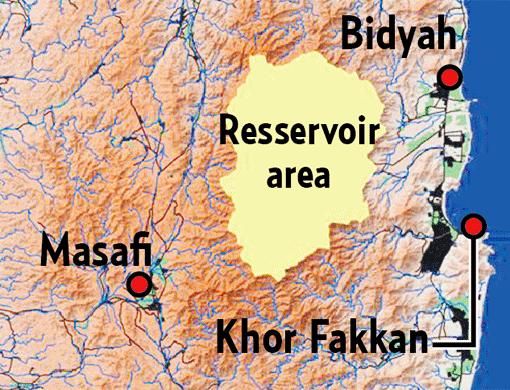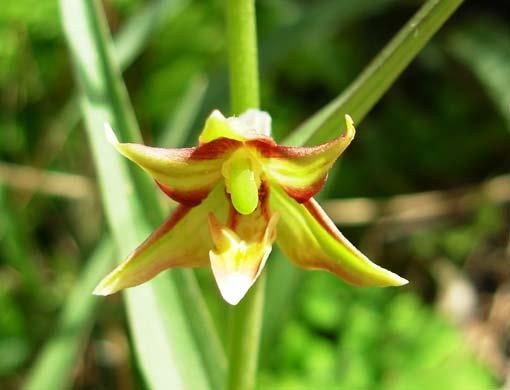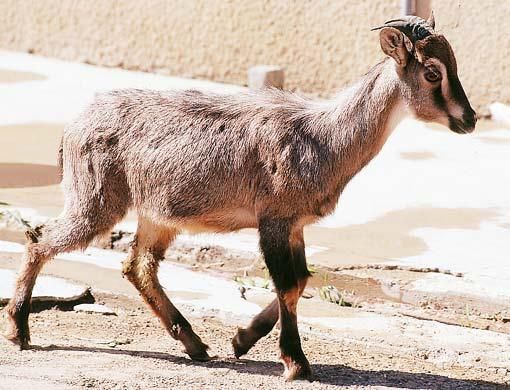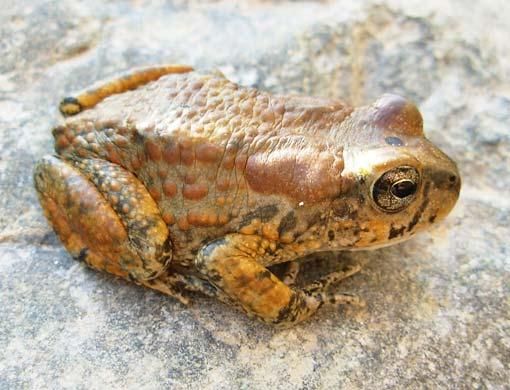Dubai: The first UAE mountain habitat to be declared as a protected zone was officially announced yesterday, along with continued plans to monitor all fauna and flora and train local tribesmen to work as rangers.
Wadi Wurayah in Fujairah, an area of 129 square kilometers, is an important site for the amount of freshwater that has been captured in its peaks.
The more surprising aspects of the wadi include the quality of the water in freshwater pools, waterfalls and springs which has passed all World Health Organisation (WHO) standards for drinking water, the discovery of seven insects new to science and one species of fish endemic to the Arabian Peninsula.
It is also one of only three areas in the world where the Arabian Tahr still exists. Around 20 to 30 are believed to live in the wadi.
Conservation efforts have been in the pipeline since 2005 and were initiated by the Emirates Wildlife Society and the Worldwide Fund for Nature (EWS-WWF) and funded by HSBC.
Razan Mubarak, managing director of EWS, said Wadi Wurayah is a Priority WWF Global 200 Eco-region, falling under the Arabian highlands and shrub-lands category. "The area is crucial to conservation," she said.
Razan said three phases of the conservation project include declaring it as a protected area, developing a conservation management plan and mapping out areas for use.
The wadi will not be fenced, but will have some restrictions regarding hunting and wardens will be positioned to make sure nobody degrades the area with litter.
Traditional practises
Razan said the area is rich in history and archeology and is also the wettest area in the UAE. Some of the traditional practices still alive are honey and medicinal plant gathering.
The aim of Wadi Wurayah Protected Area is to establish a sustainable protected area, integrating local tradition and lifestyle with the conservation of biodiversity and habitat by providing s model of unique economic incentives to the region.
A baseline study to document fauna and flora in the wadi was headed by Christophe Tourenq from WWF, who worked in collaboration with Fujairah Municipality.
"The upper part of the mountain is like a big sponge and water stays there all year round. It is a huge reservoir of water and one of the reasons why we want to protect it," said Tourenq.
A social survey revealed that 70 per cent of people from the local tribe agreed with the protected area project.
"Until 1981, the local Bedouins were still moving in seasonal shifts and spending the winter in the mountains and the summer in the town," said Tourenq.
The wadi is home to the unique orchid species of the UAE, 10 species of mammal of which 60 per cent are endangered, 63 species of birds of which nearly a third are endangered as well as 12 species of reptiles and amphibians. The wadi contains around 18 heritage sites, including two pre-Islamic tombs.
Flora and fauna in Wadi Wurayah
- Unique orchid of the UAE, the Epipactis Veratrifolia.
- Arabian Tahr: between 20 to 30 are believed to exist in the wadi, one of only three places in the UAE. Tahrs are endemic to northern Oman and the UAE.
- Mountain gazelle, Caracal lynx, Blandford's fox and Arabian leopard were found to be present in 2000 and rediscovered in 2007.
- Seven insects new to nature: springtails (Collembola), skin beetles (Dermestidae), humpbacked flies (Phoridae), mayflies (Ephemeroptera) and small parasitic wasps (platygastridae)
- Birds: 63 species, including Bonelli's eagle, Barbary falcon, Hume's Tawny Owl, Spotted Eagle Owl.
- 12 reptiles species of which 4 are endemic to UAE mountains and northern Oman, including blue tailed lizard, bar-tailed semaphone gecko, rock semaphore gecko and Arabian toad.
- Endemic freshwater fish the Garra Barreimiae


















